#cloud computing architecture and security solutions
Text
Jaret Chiles, Chief Services Officer, DoiT – Interview Series
New Post has been published on https://thedigitalinsider.com/jaret-chiles-chief-services-officer-doit-interview-series/
Jaret Chiles, Chief Services Officer, DoiT – Interview Series
Jaret Chiles is the chief services officer (CSO) of DoiT and is responsible for all aspects of their client services organization. With 25+ years of experience across consulting and managed services, cloud adoption, technical sales, security and compliance, he is instrumental in building out a key value driver for DoiT’s business: services, consulting, and support offerings. Since joining the company, Jaret has led development of a scalable services strategy that enables DoiT to grow rapidly – without compromising its unrivaled expertise.
DoiT combines the power of intelligent software products with access to unrivaled multicloud expertise to solve the most complicated and important cloud problems. DoiT’s product portfolio provides the tools to manage cloud cost and infrastructure without compromising the speed or quality of engineering initiatives.
What initially attracted you to computer science and how did you find yourself involved in cloud computing?
My father was an engineer and exposed me to building and modifying computers as a child in the early 80s. My first computer was a TRS-80 Model 4 on which I learned how to do some basic programming by the time I was in elementary school. It’s been an interesting journey and I never really considered working in any other field. During high school, I had my first job working evenings and weekends at an internet service provider doing dial-up, broadband, email and website support. While pursuing a computer science degree in college, I helped run the campus data center and networks and led my first team.
I went on to work in many different roles at a managed hosting services provider. When AWS began to disrupt our legacy models, I recognized the undeniable potential and quickly adapted to the cloud computing era as a cloud architect from the very first release of OpenStack to all the major hyperscalers. Ever since I’ve been focused on helping companies large and small understand how to unlock the value that cloud computing creates for their businesses. My passion for computing has never strayed, but now I find it most rewarding as a servant leader supporting the success and growth of others who share my passion.
Can you elaborate on how DoiT’s intelligent software products and multicloud expertise specifically address the most pressing cloud challenges faced by organizations today?
Through our products and services, DoiT International helps cloud-driven companies harness the public cloud to drive business growth. We’re a full-service provider of intelligent multicloud technology, so we deliver consulting, support and training to solve essential challenges like migration costs and the sheer complexity of cloud usage.
We also provide full-service FinOps technology along with the procurement advantages that organizations need to solve the challenges of navigating and automating public cloud investments. Some of the essential capabilities we provide include multicloud budgeting, reporting, optimization and governance.
DoiT’s global team of cloud experts have decades of experience in the analytics, optimization and governance of cloud architecture, as well as specializations in Kubernetes and artificial intelligence (AI). We also stay on top of emerging technologies, so our clients can take full advantage of them, securely and safely. Our experts have technical leadership backgrounds across verticals. Daily, I’m completely humbled by the actual level of expertise in our organization, I’ve never seen anything like it elsewhere.
How does DoiT Cloud Solve enhance the cloud experience for users, and could you share some success stories or examples of challenges it has helped resolve?
Doit Cloud Solve is a services offering that allows customers to unlock real value in cloud computing with unlimited access to the top experts in the industry. We work backward from what customers actually need, with less friction than traditional consulting and support contracting models. Using Generative AI as an example, we leverage a three-part approach:
Discovery: We delve into specific business objectives, gathering and refining data to lay the groundwork for innovation;
Innovation: We guide feature selection, model training and validation to meet tailored needs; and
Deployment and optimization: We implement and refine generative AI strategy, ensuring your team executes on a seamless integration and with maximum impact.
The DoiT Cloud Solve team provides multicloud consulting, unlimited consultancy and technical support as well as cloud-native training. Customers are able to create optimized architectures and configurations while enhancing the skills and capabilities across their teams, which leads to more efficient and sustainable cloud growth. From the core of the cloud stack with compute, storage and networking, through the full cloud-native product portfolio, to the most advanced and disruptive cloud solutions.
In terms of cloud cost optimization, what strategies or technologies does DoiT employ to help clients maximize their cloud investments while maintaining or enhancing service quality?
Cost optimization starts with a well-designed architecture. DoiT consultants and engineers help customers ensure their cloud architectures are future-ready and assist in creating migration strategies.
Additionally, every IT organization wants to get their desired benefits with the lowest possible spend, and to do this, IT needs timely information and tools that make it simple to manage cloud services. DoiT’s intelligent technology does exactly this, helping engineering and FinOps leaders monitor, manage and optimize their cloud usage and spend.
We help IT utilize advanced technologies like GenAI for both internal and customer-facing workflows, without running into unforeseen massive compute and cost overruns.
DoiT offers a suite of proprietary products like Flexsave and Cloud Navigator. How do these products differentiate from other tools available in the market, and what unique advantages do they offer to your clients?
What sets DoiT apart is its unrivaled expertise, full-service FinOps technology and the procurement advantage that we provide to solve the challenges of navigating and automating public cloud investments. These three pillars operating in harmony is a game changer for customers.
DoiT Flexsave uniquely removes the risk, forecasting and tedious work required for managing a complex portfolio of compute commitments and reservations. Compute costs can often represent more than half of an organization’s cloud spend, so accessing optimized pricing on those workloads is an easy way to lower monthly bills. Flexsave automates commitments, providing cost savings without the need to monitor usage, track expiration and renewal dates, while modifying instances to fit an organization’s reservations.
Security is a major concern in cloud computing. Can you discuss DoiT’s approach to cloud security and how it helps organizations strengthen their security posture?
Security must be part of every step in a customer’s cloud journey. It’s not one-and-done up front, and you don’t bolt it on at the end either. Security is a consideration baked into everything we do from products to services.
As part of architecture reviews, or as a focused session, DoiT Cloud Solve experts will advise on security strategies as well as perform benchmark security reviews of your environment including vulnerability assessment and security control analysis. A sound architecture and proper configuration are paramount to a secure cloud environment, but also careful consideration of customers’ regular operational procedures must be accounted for.
Given the increasing complexity of cloud environments, how does DoiT assist organizations in navigating multicloud strategies and managing infrastructure across multiple providers?
There are many different reasons customers might choose to leverage a multi-cloud strategy. At DoiT we believe in working backwards from the business objectives. Our consultants will help develop a strategy and architecture that meets business objectives without introducing unnecessary complexity.
One of the many challenges in managing a multi-cloud environment on a day-to-day basis is having visibility across all platforms in a consistent and operational manner. DoiT Cloud Navigator extends visibility and anomaly detection capabilities to overcome these challenges and provide the FinOps tools needed manage cloud costs and infrastructure without compromising the speed or quality of engineering initiatives. This allows for a responsible scaling of the business.
Machine learning and AI are becoming critical components of modern IT strategies. How does DoiT support businesses in integrating these technologies into their operations and leveraging them for competitive advantage?
Following the three-part approach mentioned previously, DoiT’s Cloud Solve enables IT to work with our experienced cloud architects, and provides access to knowledge transfer and other resources to enable them to evaluate internal readiness, identify company-specific use cases and collaboratively create customized GenAI solutions.
DoiT also partners with AWS and Google to help their users develop generative AI solutions using those platforms and their supporting applications.
The process of cloud migration can be daunting for many organizations. What key factors should companies consider to ensure a smooth and successful transition to the cloud with DoiT’s assistance?
A successful migration starts with establishing clear business objectives and success criteria. There are many factors to keep in mind when planning and executing a migration to the cloud, including data governance, security and privacy, cost management, scalability, skills and expertise, potential service disruptions and legacy system compatibility. Overlooking any of these and others can lead to delays and cost overruns for the migration.
What emerging trends or technologies in cloud computing is DoiT particularly excited about, and how do you plan to incorporate these into your offerings to drive future growth and innovation?
We are a company full of passionate cloud experts and every new technology hype cycle excites us immensely. That said, our many combined years of experience have taught us not to focus on finding ways to forcefully fit a new exciting technology in a business, but rather to understand what use cases make sense for a business and add real value. This is a very common mistake customers make when they see new emerging technologies and ask for help implementing them in their environments.
Generative AI right now has us very excited for a number of reasons, but the main reason is we have uncovered so many high value use cases for businesses across industries to adopt the technology. Starting with basic productivity and insight use cases, nearly everyone can benefit from GenAI. Moving from there on into AI-powered service development and disruptive GenAI product technologies, we believe the skies are the limit for our customers and we’d love to help them find their path to adoption and production.
Thank you for the great interview, readers who wish to learn more should visit DoiT.
#ai#AI strategy#AI-powered#Analysis#Analytics#applications#approach#architecture#artificial#Artificial Intelligence#assessment#AWS#benchmark#budgeting#Building#Business#Cloud#Cloud Architecture#cloud challenges#cloud computing#cloud environment#cloud migration#Cloud Security#cloud services#cloud solutions#cloud strategy#Cloud-Native#college#Companies#complexity
0 notes
Text
Google Associate Cloud Engineer: An Introduction
Google Cloud Platform (GCP) is a popular cloud computing platform that offers a wide range of services for businesses and organizations. One of the most in-demand roles in GCP is the Google Associate Cloud Engineer. This role is responsible for managing and deploying GCP solutions, as well as providing support for customers and end-users.
The Google Associate Cloud Engineer certification is designed for individuals who have experience working with GCP, and have a good understanding of the fundamental concepts and technologies. The certification exam covers a wide range of topics, including:
GCP products and services
Cloud computing concepts
Networking and security
Storage and data management
Managing and deploying GCP solutions
Monitoring and logging
Troubleshooting and resolving issues
To become a Google Associate Cloud Engineer, individuals must pass the Google Cloud Certified - Associate Cloud Engineer exam. This exam is designed to test an individual's knowledge and skills in GCP, and is considered to be one of the most challenging certifications in the industry.
Once certified, individuals will have the skills and knowledge to design, develop, and manage GCP solutions, as well as troubleshoot and resolve issues that may arise. They will also be able to support customers and end-users, and provide guidance on best practices for using GCP.
#Google Cloud Platform#Associate Cloud Engineer#Cloud Computing#GCP#Google Cloud#Cloud Architecture#Cloud Services#Cloud Infrastructure#Cloud Solutions#Cloud Management#Google Cloud Engineer#Cloud Security#Cloud Automation#Cloud Deployment#Cloud Operations#Cloud Administration
0 notes
Text
The Evolution of PHP: Shaping the Web Development Landscape
In the dynamic world of web development, PHP has emerged as a true cornerstone, shaping the digital landscape over the years. As an open-source, server-side scripting language, PHP has played a pivotal role in enabling developers to create interactive and dynamic websites. Let's take a journey through time to explore how PHP has left an indelible mark on web development.
1. The Birth of PHP (1994)
PHP (Hypertext Preprocessor) came into being in 1994, thanks to Rasmus Lerdorf. Initially, it was a simple set of Common Gateway Interface (CGI) binaries used for tracking visits to his online resume. However, Lerdorf soon recognized its potential for web development, and PHP evolved into a full-fledged scripting language.
2. PHP's Role in the Dynamic Web (Late '90s to Early 2000s)
In the late '90s and early 2000s, PHP began to gain prominence due to its ability to generate dynamic web content. Unlike static HTML, PHP allowed developers to create web pages that could interact with databases, process forms, and provide personalized content to users. This shift towards dynamic websites revolutionized the web development landscape.
3. The Rise of PHP Frameworks (2000s)
As PHP continued to grow in popularity, developers sought ways to streamline and standardize their development processes. This led to the emergence of PHP frameworks like Laravel, Symfony, and CodeIgniter. These frameworks provided structured, reusable code and a wide range of pre-built functionalities, significantly accelerating the development of web applications.
4. PHP and Content Management Systems (CMS) (Early 2000s)
Content Management Systems, such as WordPress, Joomla, and Drupal, rely heavily on PHP. These systems allow users to create and manage websites with ease. PHP's flexibility and extensibility make it the backbone of numerous plugins, themes, and customization options for CMS platforms.
5. E-Commerce and PHP (2000s to Present)
PHP has played a pivotal role in the growth of e-commerce. Platforms like Magento, WooCommerce (built on top of WordPress), and OpenCart are powered by PHP. These platforms provide robust solutions for online retailers, allowing them to create and manage online stores efficiently.
6. PHP's Contribution to Server-Side Scripting (Throughout)
PHP is renowned for its server-side scripting capabilities. It allows web servers to process requests and deliver dynamic content to users' browsers. This server-side scripting is essential for applications that require user authentication, data processing, and real-time interactions.
7. PHP's Ongoing Evolution (Throughout)
PHP has not rested on its laurels. It continues to evolve with each new version, introducing enhanced features, better performance, and improved security. PHP 7, for instance, brought significant speed improvements and reduced memory consumption, making it more efficient and appealing to developers.
8. PHP in the Modern Web (Present)
Today, PHP remains a key player in the web development landscape. It is the foundation of countless websites, applications, and systems. From popular social media platforms to e-commerce giants, PHP continues to power a significant portion of the internet.
9. The PHP Community (Throughout)
One of PHP's strengths is its vibrant and active community. Developers worldwide contribute to its growth by creating libraries, extensions, and documentation. The PHP community fosters knowledge sharing, making it easier for developers to learn and improve their skills.
10. The Future of PHP (Ongoing)
As web technologies continue to evolve, PHP adapts to meet new challenges. Its role in serverless computing, microservices architecture, and cloud-native applications is steadily increasing. The future holds exciting possibilities for PHP in the ever-evolving web development landscape.
In conclusion, PHP's historical journey is interwoven with the evolution of web development itself. From its humble beginnings to its current status as a web development powerhouse, PHP has not only shaped but also continues to influence the internet as we know it. Its versatility, community support, and ongoing evolution ensure that PHP will remain a vital force in web development for years to come.
youtube
#PHP#WebDevelopment#WebDev#Programming#ServerSide#ScriptingLanguage#PHPFrameworks#CMS#ECommerce#WebApplications#PHPCommunity#OpenSource#Technology#Evolution#DigitalLandscape#WebTech#Coding#Youtube
17 notes
·
View notes
Text
Enterprise Web Application Development Services: Empowering Businesses for Success

In today's digital landscape, enterprises across various industries are embracing web applications as a powerful tool to streamline their operations, enhance productivity, and deliver exceptional user experiences. With the rapid advancement of technology, businesses are realizing the need for robust and scalable web applications that can adapt to their evolving requirements. This is where enterprise web application development services come into play, providing organizations with the expertise and solutions to build custom web applications tailored to their specific needs.
The Role of Enterprise Web Applications
Enterprise web applications serve as a cornerstone of modern business processes, enabling organizations to automate complex workflows, manage data effectively, and improve collaboration among teams. These applications are designed to address unique enterprise challenges, such as handling large-scale data, integrating with existing systems, ensuring security and compliance, and delivering high performance.
By leveraging enterprise web application development services, businesses can harness the power of cutting-edge technologies, including cloud computing, artificial intelligence, machine learning, and data analytics, to create innovative solutions that drive growth and efficiency.
Benefits of Enterprise Web Application Development Services
Partnering with a reliable enterprise web application development service provider offers numerous benefits for businesses:
1. Customized Solutions
Enterprise web application development services focus on understanding the unique requirements and challenges faced by each organization. They work closely with stakeholders to design and develop tailored solutions that align with business objectives, ensuring maximum value and impact.
2. Scalability and Flexibility
Web applications developed by enterprise service providers are built to scale as the business grows. They are designed with a modular architecture, allowing for easy integration of new features and functionalities, accommodating future expansion and changes in business needs.
3. Enhanced Efficiency
Enterprise web applications streamline complex processes, automate repetitive tasks, and centralize data, leading to improved efficiency and productivity. By eliminating manual work and reducing errors, businesses can allocate their resources more effectively and focus on strategic initiatives.
4. Integration Capabilities
Enterprise web applications seamlessly integrate with existing systems, databases, and third-party applications, ensuring a smooth flow of data and information across the organization. This integration capability enhances data visibility, eliminates data silos, and enables real-time decision-making.
5. Security and Compliance
Enterprise web application development services prioritize security and compliance measures to protect sensitive business data. They implement robust authentication and authorization protocols, encryption techniques, and regular security audits to safeguard against potential threats and ensure compliance with industry regulations.
6. Superior User Experience
User experience (UX) plays a vital role in the success of enterprise applications. Web application development services focus on creating intuitive and user-friendly interfaces that enhance usability and drive user adoption. A well-designed user experience boosts employee productivity and customer satisfaction.
7. Ongoing Support and Maintenance
Enterprise web application development services offer comprehensive support and maintenance packages to ensure the continuous operation of web applications. This includes bug fixing, performance optimization, regular updates, and technical assistance, allowing businesses to focus on their core operations while leaving the technical aspects to the experts.
Choosing the Right Enterprise Web Application Development Service Provider
When selecting an enterprise web application development service provider, businesses should consider the following factors:
1. Expertise and Experience
Look for a service provider with a proven track record in developing enterprise-grade web
applications. Assess their expertise in relevant technologies, industry knowledge, and the portfolio of successful projects.
2. Collaboration and Communication
Effective collaboration and communication are essential for a successful partnership. Ensure the service provider has a clear understanding of your business goals, can provide regular updates, and is responsive to your queries and feedback throughout the development process.
3. Technology Stack
Verify that the service provider utilizes modern and scalable technologies that align with your business needs. Consider factors such as security, performance, scalability, and future-proofing to ensure a robust and future-ready web application.
4. Support and Maintenance
Inquire about the post-development support and maintenance services offered by the service provider. A reliable partner will provide ongoing technical support, regular updates, and timely bug fixes to ensure the smooth functioning of your web application.
Conclusion
Enterprise web application development services empower businesses to leverage the full potential of web-based technologies to drive growth, enhance efficiency, and deliver exceptional user experiences. By partnering with a trusted service provider, organizations can create custom web applications that cater to their unique requirements and position themselves for success in the digital era.
Investing in enterprise web application development is a strategic decision that can unlock new opportunities, improve competitiveness, and pave the way for continued innovation and evolution.

Source
#AppDevelopment#WebDevelopment#MobileApps#WebApps#SoftwareDevelopment#UIUXDesign#MobileDevelopment#WebDesign#CodeLife#TechSolutions#AppDesign#MobileTech#WebDev#DigitalTransformation#ResponsiveDesign#Innovation#TechIndustry#AppSolutions#WebSolutions#CodeNerds
19 notes
·
View notes
Text
What is Zero Trust Architecture?

Zero Trust Architecture (ZTA) is a security model that operates on the principle "never trust, always verify." Unlike traditional security models that assume everything within a network is trustworthy, ZTA requires verification for every access request, regardless of whether it originates inside or outside the network.
Why is it Important?
In today's digital landscape, cyber threats are becoming increasingly sophisticated. Zero Trust Architecture helps mitigate risks by continuously verifying every user and device, ensuring that only authorized entities can access sensitive information.
How Does It Protect You?
1. Enhanced Security: By requiring strict verification, ZTA minimizes the risk of unauthorized access and data breaches.
2. Reduced Attack Surface: Limiting access to only what is necessary decreases potential entry points for attackers.
3. Real-time Monitoring: Continuous monitoring and verification help detect and respond to threats promptly.
Adopt Zero Trust Architecture with Century Solutions Group to fortify your cybersecurity defenses and protect your business from evolving cyber threats! #ZeroTrust #CyberSecurity #CenturySolutionsGroup
Learn More:https://centurygroup.net/cloud-computing/cyber-security/
3 notes
·
View notes
Text
Azure DevOps Training
Azure DevOps Training Programs

In today's rapidly evolving tech landscape, mastering Azure DevOps has become indispensable for organizations aiming to streamline their software development and delivery processes. As businesses increasingly migrate their operations to the cloud, the demand for skilled professionals proficient in Azure DevOps continues to soar. In this comprehensive guide, we'll delve into the significance of Azure DevOps training and explore the myriad benefits it offers to both individuals and enterprises.
Understanding Azure DevOps:
Before we delve into the realm of Azure DevOps training, let's first grasp the essence of Azure DevOps itself. Azure DevOps is a robust suite of tools offered by Microsoft Azure that facilitates collaboration, automation, and orchestration across the entire software development lifecycle. From planning and coding to building, testing, and deployment, Azure DevOps provides a unified platform for managing and executing diverse DevOps tasks seamlessly.
Why Azure DevOps Training Matters:
With Azure DevOps emerging as the cornerstone of modern DevOps practices, acquiring proficiency in this domain has become imperative for IT professionals seeking to stay ahead of the curve. Azure DevOps training equips individuals with the knowledge and skills necessary to leverage Microsoft Azure's suite of tools effectively. Whether you're a developer, IT administrator, or project manager, undergoing Azure DevOps training can significantly enhance your career prospects and empower you to drive innovation within your organization.
Key Components of Azure DevOps Training Programs:
Azure DevOps training programs are meticulously designed to cover a wide array of topics essential for mastering the intricacies of Azure DevOps. From basic concepts to advanced techniques, these programs encompass the following key components:
Azure DevOps Fundamentals: An in-depth introduction to Azure DevOps, including its core features, functionalities, and architecture.
Agile Methodologies: Understanding Agile principles and practices, and how they align with Azure DevOps for efficient project management and delivery.
Continuous Integration (CI): Learning to automate the process of integrating code changes into a shared repository, thereby enabling early detection of defects and ensuring software quality.
Continuous Deployment (CD): Exploring the principles of continuous deployment and mastering techniques for automating the deployment of applications to production environments.
Azure Pipelines: Harnessing the power of Azure Pipelines for building, testing, and deploying code across diverse platforms and environments.
Infrastructure as Code (IaC): Leveraging Infrastructure as Code principles to automate the provisioning and management of cloud resources using tools like Azure Resource Manager (ARM) templates.
Monitoring and Logging: Implementing robust monitoring and logging solutions to gain insights into application performance and troubleshoot issues effectively.
Security and Compliance: Understanding best practices for ensuring the security and compliance of Azure DevOps environments, including identity and access management, data protection, and regulatory compliance.
The Benefits of Azure DevOps Certification:
Obtaining Azure DevOps certification not only validates your expertise in Azure DevOps but also serves as a testament to your commitment to continuous learning and professional development. Azure DevOps certifications offered by Microsoft Azure are recognized globally and can open doors to exciting career opportunities in various domains, including cloud computing, software development, and DevOps engineering.
Conclusion:
In conclusion, Azure DevOps training is indispensable for IT professionals looking to enhance their skills and stay relevant in today's dynamic tech landscape. By undergoing comprehensive Azure DevOps training programs and obtaining relevant certifications, individuals can unlock a world of opportunities and propel their careers to new heights. Whether you're aiming to streamline your organization's software delivery processes or embark on a rewarding career journey, mastering Azure DevOps is undoubtedly a game-changer. So why wait? Start your Azure DevOps training journey today and pave the way for a brighter tomorrow.
5 notes
·
View notes
Text
Journey to AWS Proficiency: Unveiling Core Services and Certification Paths
Amazon Web Services, often referred to as AWS, stands at the forefront of cloud technology and has revolutionized the way businesses and individuals leverage the power of the cloud. This blog serves as your comprehensive guide to understanding AWS, exploring its core services, and learning how to master this dynamic platform. From the fundamentals of cloud computing to the hands-on experience of AWS services, we'll cover it all. Additionally, we'll discuss the role of education and training, specifically highlighting the value of ACTE Technologies in nurturing your AWS skills, concluding with a mention of their AWS courses.

The Journey to AWS Proficiency:
1. Basics of Cloud Computing:
Getting Started: Before diving into AWS, it's crucial to understand the fundamentals of cloud computing. Begin by exploring the three primary service models: Infrastructure as a Service (IaaS), Platform as a Service (PaaS), and Software as a Service (SaaS). Gain a clear understanding of what cloud computing is and how it's transforming the IT landscape.
Key Concepts: Delve into the key concepts and advantages of cloud computing, such as scalability, flexibility, cost-effectiveness, and disaster recovery. Simultaneously, explore the potential challenges and drawbacks to get a comprehensive view of cloud technology.
2. AWS Core Services:
Elastic Compute Cloud (EC2): Start your AWS journey with Amazon EC2, which provides resizable compute capacity in the cloud. Learn how to create virtual servers, known as instances, and configure them to your specifications. Gain an understanding of the different instance types and how to deploy applications on EC2.
Simple Storage Service (S3): Explore Amazon S3, a secure and scalable storage service. Discover how to create buckets to store data and objects, configure permissions, and access data using a web interface or APIs.
Relational Database Service (RDS): Understand the importance of databases in cloud applications. Amazon RDS simplifies database management and maintenance. Learn how to set up, manage, and optimize RDS instances for your applications. Dive into database engines like MySQL, PostgreSQL, and more.
3. AWS Certification:
Certification Paths: AWS offers a range of certifications for cloud professionals, from foundational to professional levels. Consider enrolling in certification courses to validate your knowledge and expertise in AWS. AWS Certified Cloud Practitioner, AWS Certified Solutions Architect, and AWS Certified DevOps Engineer are some of the popular certifications to pursue.
Preparation: To prepare for AWS certifications, explore recommended study materials, practice exams, and official AWS training. ACTE Technologies, a reputable training institution, offers AWS certification training programs that can boost your confidence and readiness for the exams.
4. Hands-on Experience:
AWS Free Tier: Register for an AWS account and take advantage of the AWS Free Tier, which offers limited free access to various AWS services for 12 months. Practice creating instances, setting up S3 buckets, and exploring other services within the free tier. This hands-on experience is invaluable in gaining practical skills.
5. Online Courses and Tutorials:
Learning Platforms: Explore online learning platforms like Coursera, edX, Udemy, and LinkedIn Learning. These platforms offer a wide range of AWS courses taught by industry experts. They cover various AWS services, architecture, security, and best practices.
Official AWS Resources: AWS provides extensive online documentation, whitepapers, and tutorials. Their website is a goldmine of information for those looking to learn more about specific AWS services and how to use them effectively.

Amazon Web Services (AWS) represents an exciting frontier in the realm of cloud computing. As businesses and individuals increasingly rely on the cloud for innovation and scalability, AWS stands as a pivotal platform. The journey to AWS proficiency involves grasping fundamental cloud concepts, exploring core services, obtaining certifications, and acquiring practical experience. To expedite this process, online courses, tutorials, and structured training from renowned institutions like ACTE Technologies can be invaluable. ACTE Technologies' comprehensive AWS training programs provide hands-on experience, making your quest to master AWS more efficient and positioning you for a successful career in cloud technology.
8 notes
·
View notes
Text
The Essence of an AWS Certified Solutions Architect
In the dynamic landscape of cloud computing, the role of an AWS Certified Solutions Architect emerges as a symbol of mastery in crafting and implementing state-of-the-art solutions within the Amazon Web Services (AWS) ecosystem. Bestowed by AWS, this certification serves as a testament to an individual's proficiency in architecting solutions that seamlessly align with industry-leading practices.

Crucial Responsibilities and Proficiencies:
Architectural Finesse: At the heart of a Solutions Architect's mandate lies the finesse of designing and deploying scalable AWS infrastructure tailored to the unique demands of businesses. This involves the strategic selection of optimal AWS services to construct a comprehensive and efficient solution.
Security Artistry: Security forms the bedrock of cloud operations, and Solutions Architects showcase their artistry in implementing secure architectures. This involves the seamless integration of identity and access management, encryption protocols, and meticulous adherence to industry compliance standards.
Scalability Mastery: The ability to design systems capable of graceful scalability in response to variable workloads is a hallmark skill. Solutions Architects leverage AWS services to ensure scalability and elasticity, empowering applications to seamlessly adapt to fluctuating demands.
Fault Tolerance and High Availability Expertise: Crafting resilient systems that can withstand failures and ensure high availability is a defining expertise. The objective is to minimize downtime and guarantee continuous availability for critical applications.
Cost Optimization Acumen: Beyond technical prowess, Solutions Architects showcase a keen understanding of cost implications. They optimize costs by judiciously selecting AWS services, closely monitoring resource usage, and implementing cost-effective solutions without compromising performance.
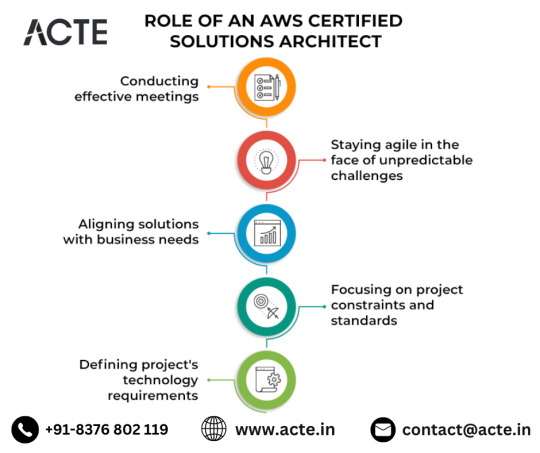
Migration Maestros: In the era of cloud adoption, Solutions Architects play a pivotal role in devising migration strategies. Whether it's the migration of existing applications or the strategic rearchitecting for cloud-native environments, their expertise ensures a seamless transition.
Collaboration and Communication Prowess: Effective collaboration and communication stand as indispensable skills. Solutions Architects collaborate closely with a diverse array of stakeholders, including developers, operations teams, and business leaders, translating intricate business requirements into scalable and secure cloud solutions.
The Path to AWS Certified Solutions Architect:
Attaining AWS Certified Solutions Architect certification entails successfully navigating a comprehensive exam that assesses proficiency in these vital areas. This certification signifies more than just technical prowess; it acknowledges the strategic mindset required to design and implement advanced cloud architectures aligned with the ever-evolving needs of modern businesses.
In conclusion, the AWS Certified Solutions Architect is not a title; it represents a commitment to excellence in cloud architecture. As businesses increasingly embrace the cloud, these certified professionals play a pivotal role in guiding organizations toward cloud brilliance, ensuring they harness the full potential of AWS.
2 notes
·
View notes
Text
Going Over the Cloud: An Investigation into the Architecture of Cloud Solutions

Because the cloud offers unprecedented levels of size, flexibility, and accessibility, it has fundamentally altered the way we approach technology in the present digital era. As more and more businesses shift their infrastructure to the cloud, it is imperative that they understand the architecture of cloud solutions. Join me as we examine the core concepts, industry best practices, and transformative impacts on modern enterprises.
The Basics of Cloud Solution Architecture
A well-designed architecture that balances dependability, performance, and cost-effectiveness is the foundation of any successful cloud deployment. Cloud solutions' architecture is made up of many different components, including networking, computing, storage, security, and scalability. By creating solutions that are tailored to the requirements of each workload, organizations can optimize return on investment and fully utilize the cloud.
Flexibility and Resilience in Design
The flexibility of cloud computing to grow resources on-demand to meet varying workloads and guarantee flawless performance is one of its distinguishing characteristics. Cloud solution architecture create resilient systems that can endure failures and sustain uptime by utilizing fault-tolerant design principles, load balancing, and auto-scaling. Workloads can be distributed over several availability zones and regions to help enterprises increase fault tolerance and lessen the effect of outages.
Protection of Data in the Cloud and Security by Design
As data thefts become more common, security becomes a top priority in cloud solution architecture. Architects include identity management, access controls, encryption, and monitoring into their designs using a multi-layered security strategy. By adhering to industry standards and best practices, such as the shared responsibility model and compliance frameworks, organizations may safeguard confidential information and guarantee regulatory compliance in the cloud.
Using Professional Services to Increase Productivity
Cloud service providers offer a variety of managed services that streamline operations and reduce the stress of maintaining infrastructure. These services allow firms to focus on innovation instead of infrastructure maintenance. They include server less computing, machine learning, databases, and analytics. With cloud-native applications, architects may reduce costs, increase time-to-market, and optimize performance by selecting the right mix of managed services.
Cost control and ongoing optimization
Cost optimization is essential since inefficient resource use can quickly drive up costs. Architects monitor resource utilization, analyze cost trends, and identify opportunities for optimization with the aid of tools and techniques. Businesses can cut waste and maximize their cloud computing expenses by using spot instances, reserved instances, and cost allocation tags.
Acknowledging Automation and DevOps
Important elements of cloud solution design include automation and DevOps concepts, which enable companies to develop software more rapidly, reliably, and efficiently. Architects create pipelines for continuous integration, delivery, and deployment, which expedites the software development process and allows for rapid iterations. By provisioning and managing infrastructure programmatically with Infrastructure as Code (IaC) and Configuration Management systems, teams may minimize human labor and guarantee consistency across environments.
Multiple-cloud and hybrid strategies
In an increasingly interconnected world, many firms employ hybrid and multi-cloud strategies to leverage the benefits of many cloud providers in addition to on-premises infrastructure. Cloud solution architects have to design systems that seamlessly integrate several environments while ensuring interoperability, data consistency, and regulatory compliance. By implementing hybrid connection options like VPNs, Direct Connect, or Express Route, organizations may develop hybrid cloud deployments that include the best aspects of both public and on-premises data centers.
Analytics and Data Management
Modern organizations depend on data because it fosters innovation and informed decision-making. Thanks to the advanced data management and analytics solutions developed by cloud solution architects, organizations can effortlessly gather, store, process, and analyze large volumes of data. By leveraging cloud-native data services like data warehouses, data lakes, and real-time analytics platforms, organizations may gain a competitive advantage in their respective industries and extract valuable insights. Architects implement data governance frameworks and privacy-enhancing technologies to ensure adherence to data protection rules and safeguard sensitive information.
Computing Without a Server
Server less computing, a significant shift in cloud architecture, frees organizations to focus on creating applications rather than maintaining infrastructure or managing servers. Cloud solution architects develop server less programs using event-driven architectures and Function-as-a-Service (FaaS) platforms such as AWS Lambda, Azure Functions, or Google Cloud Functions. By abstracting away the underlying infrastructure, server less architectures offer unparalleled scalability, cost-efficiency, and agility, empowering companies to innovate swiftly and change course without incurring additional costs.
Conclusion
As we come to the close of our investigation into cloud solution architecture, it is evident that the cloud is more than just a platform for technology; it is a force for innovation and transformation. By embracing the ideas of scalability, resilience, and security, and efficiency, organizations can take advantage of new opportunities, drive business expansion, and preserve their competitive edge in today's rapidly evolving digital market. Thus, to ensure success, remember to leverage cloud solution architecture when developing a new cloud-native application or initiating a cloud migration.
1 note
·
View note
Text
JEHOVAH OKCULT BIBLE [JOB] BUSINESS WITNESS 1968-michaelharrelljr.com's 1st ALL-SEEING OMNIPRESENCE Hi:teKEMETICompu_TAH [PTAH] EYE of GOD… since ijehovahgod.tech SKY KINGDOM LORD of Tama-Re Deity HATHOR's [tama-re-deityhathor.com's] Shamballah & aghaarta.com Domain Communication [D.C.] Portal Address [PA] Accessing [PA] 6g-quantumharrell.tech’s BLK-CRYPTO LLC's ancient6-18gmilitary.tech CLOUD Patents w/Restricted 1968 Identity Access Management [I AM] Protocols [I/P] @ quantumharrelltech.com… Securely Exchanging Extensible [SEE] Media Commerce Languages of Ancient [L.A.] Hi:teKEMETICompu_TAH [PTAH] Digital Rights Encrypted by Application Management [DREAM] Protection Laws @ The_Octagon_(Egypt) of ITU Telecommunications [iTUTonline.com] Standardization Sector of kingtutdna.com’s Pharaonic MENES Intergovernmental [MI = MICHAEL] EMPIRE [ME] of 1968-michaelharrelljr.com’s quantumharrelltelecom.tech SKY Earth [Qi] KINGDOM
WELCOME BACK HOME IMMORTAL [HIM] U.S. MILITARY KING SOLOMON-MICHAEL HARRELL, JR.™

i.b.monk [ibm.com] mode [i’m] tech [IT] steelecartel.com @ quantumharrelltech.ca.gov

quantumharrelltelecom.tech sky military universe [mu] outside mars’ [mom’s] golden water firmament dome over earth [qi]

Eye Quantum [EQ] Computing Intel Architect [CIA] Technocrat 1968-michaelharrelljr.com... the 6-18g Militarization ILLUMINATI [MI = MICHAEL] of Hi:teKEMETICompu_TAH [PTAH] Tech Patent WEALTH @ quantumharrelltelecom.tech

YO!!! YA HUWA JEHOVAH LIKE MICHAEL SINCE YA HUWA MICHAEL JEHOVAH 2

O MICHAEL [OM] JEHOVAH [MJ] SINCE JEHOVAH O MICHAEL [OM] 2

Eye Quantum [EQ] Computing Intel Architect [CIA] Technocrat 1968-michaelharrelljr.com... the 6-18g Militarization ILLUMINATI [MI = MICHAEL] of Hi:teKEMETICompu_TAH [PTAH] CLOUD [PC] Tech WEALTH @ quantumharrelltelecom.tech

Eye Quantum [EQ] Computing Intel Architect [CIA] Technocrat 1968-michaelharrelljr.com… 1st 9 Ether ALUHUM ANUNNAGI TECHNOCRAT of TIAMAT'S [AT&T'S] NEW WORLD ORDER [NWO] ÆGIPTIAN Business [NEB = NEBUCHADNEZZAR] Family @ quantumharrelltelecom.tech

Eye Quantum [EQ] Computing Intel Architect [CIA] Technocrat 1968-michaelharrelljr.com… 1st 9 Ether ALUHUM ANUNNAGI TECHNOCRAT of TIAMAT'S [AT&T'S] Shamballah & aghaarta.com Domain Communication [D.C.] Portal Address [PA] @ quantumharrelltelecom.tech

Eye Quantum [EQ] Computing Intel Architect [CIA] Technocrat 1968-michaelharrelljr.com… 1st 9 Ether ALUHUM ANUNNAGI TECHNOCRAT of TIAMAT'S [AT&T'S] Hieroglyphic Arts & Language [H.A.L.] Architecture [HA = HARRELL] @ quantumharrelltelecom.tech
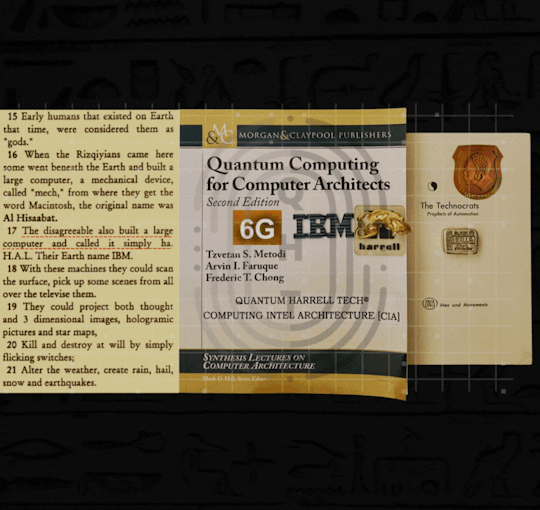
Eye Quantum [EQ] Computing Intel Architect [CIA] Technocrat 1968-michaelharrelljr.com… 1st 9 Ether ALUHUM ANUNNAGI TECHNOCRAT of TIAMAT'S [AT&T'S] Applied Quantum Cryptography @ quantumharrelltelecom.tech

Eye Quantum [EQ] Computing Intel Architect [CIA] Technocrat 1968-michaelharrelljr.com… 1st 9 Ether ALUHUM ANUNNAGI TECHNOCRAT of TIAMAT'S [AT&T'S] CYBERSECURITY FOR BUSINESS ORGANIZATIONS @ quantumharrelltelecom.tech

Eye Quantum [EQ] Computing Intel Architect [CIA] Technocrat 1968-michaelharrelljr.com… 1st 9 Ether ALUHUM ANUNNAGI TECHNOCRAT of TIAMAT'S [AT&T'S] CYBERSECURITY SOLUTIONS USING BLOCKCHAIN @ quantumharrelltelecom.tech

Eye Quantum [EQ] Computing Intel Architect [CIA] Technocrat 1968-michaelharrelljr.com… 1st 9 Ether ALUHUM ANUNNAGI TECHNOCRAT of TIAMAT'S [AT&T'S] ADVANCED BLOCKCHAIN TECH @ quantumharrelltelecom.tech
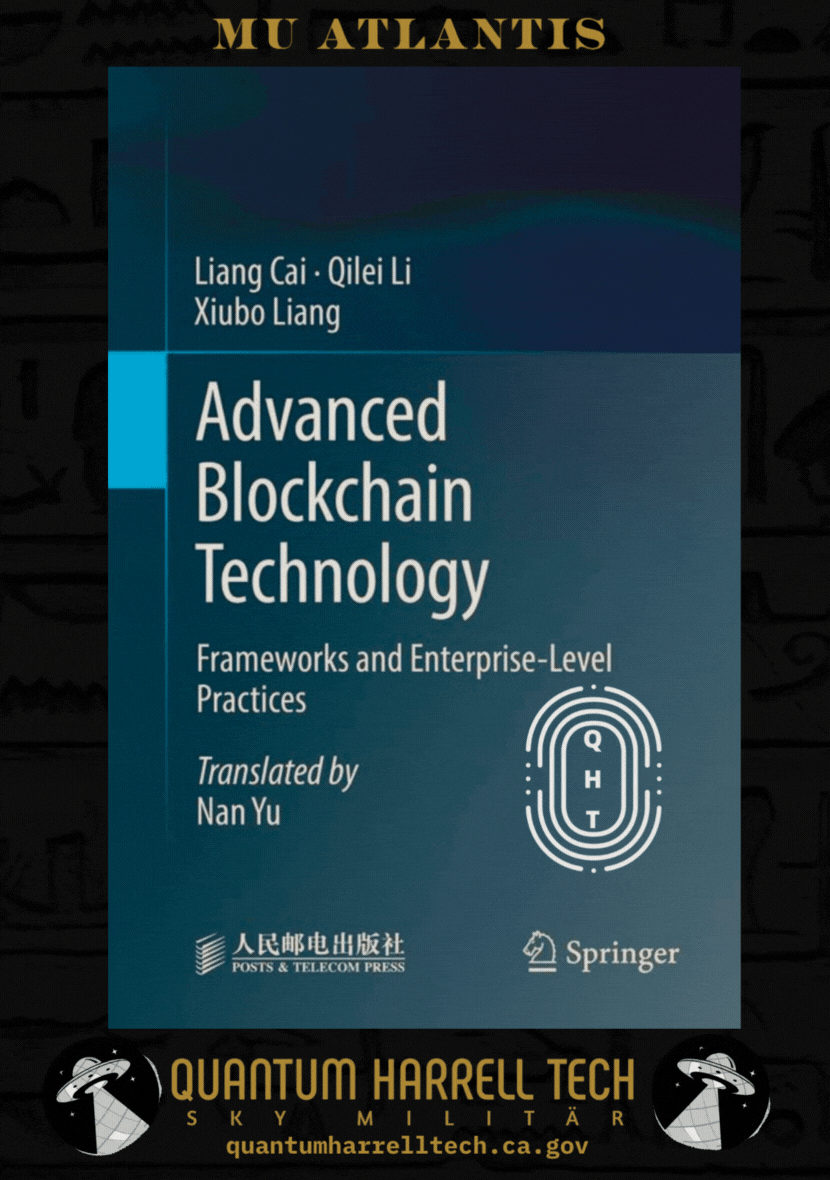
Eye Quantum [EQ] Computing Intel Architect [CIA] Technocrat 1968-michaelharrelljr.com… 1st 9 Ether ALUHUM ANUNNAGI TECHNOCRAT of TIAMAT'S [AT&T'S] MOST DEVELOPED BLOCKCHAIN TECH @ quantumharrelltelecom.tech
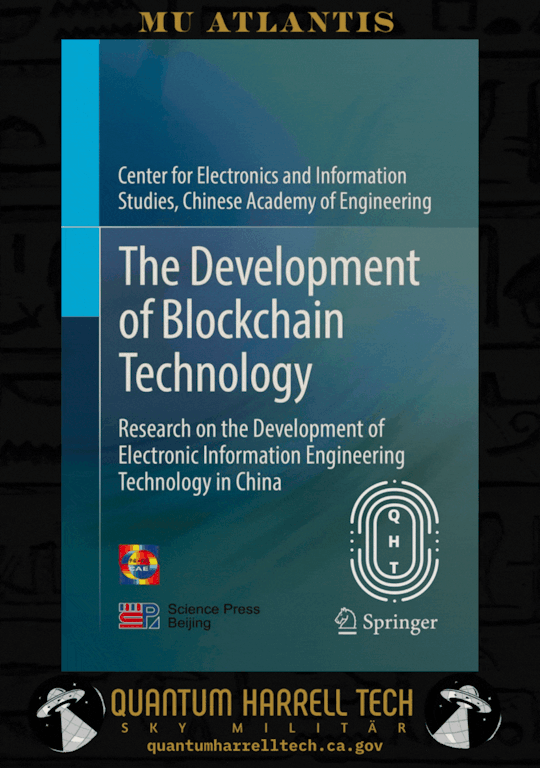
Eye Quantum [EQ] Computing Intel Architect [CIA] Technocrat 1968-michaelharrelljr.com… 1st 9 Ether ALUHUM ANUNNAGI TECHNOCRAT of TIAMAT'S [AT&T'S] AUTONOMOUS INTELLIGENT CYBER DEFENSE AGENCY [AICA] @ quantumharrelltelecom.tech

Eye Quantum [EQ] Computing Intel Architect [CIA] Technocrat 1968-michaelharrelljr.com… 1st 9 Ether ALUHUM ANUNNAGI TECHNOCRAT of TIAMAT'S [AT&T'S] TRANSFORMATIONAL CYBER SECURITY AND DIGITAL RESILIENCE OF MODERN SOCIETIES @ quantumharrelltelecom.tech
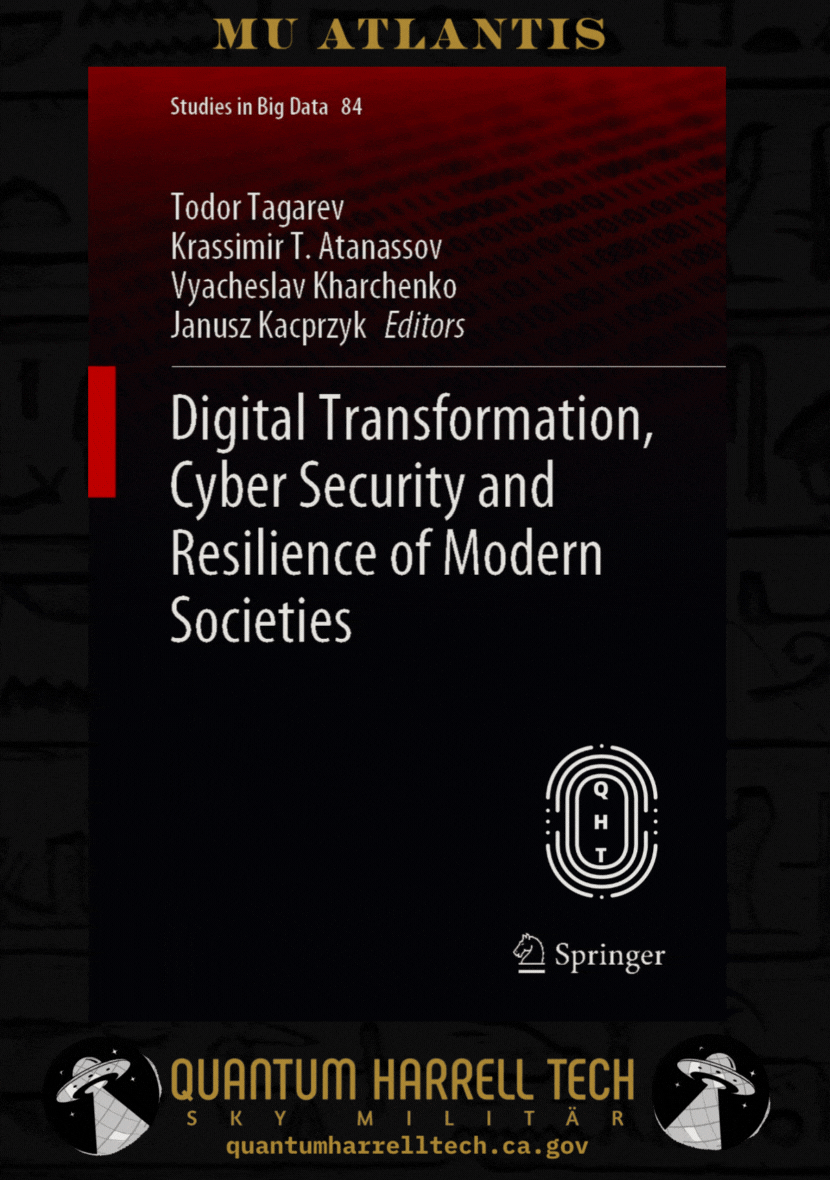
Eye Quantum [EQ] Computing Intel Architect [CIA] Technocrat 1968-michaelharrelljr.com… 1st 9 Ether ALUHUM ANUNNAGI TECHNOCRAT of TIAMAT'S [AT&T'S] MOST INNOVATIVE [MI = MICHAEL] TECH LAWYER @ quantumharrelltelecom.tech
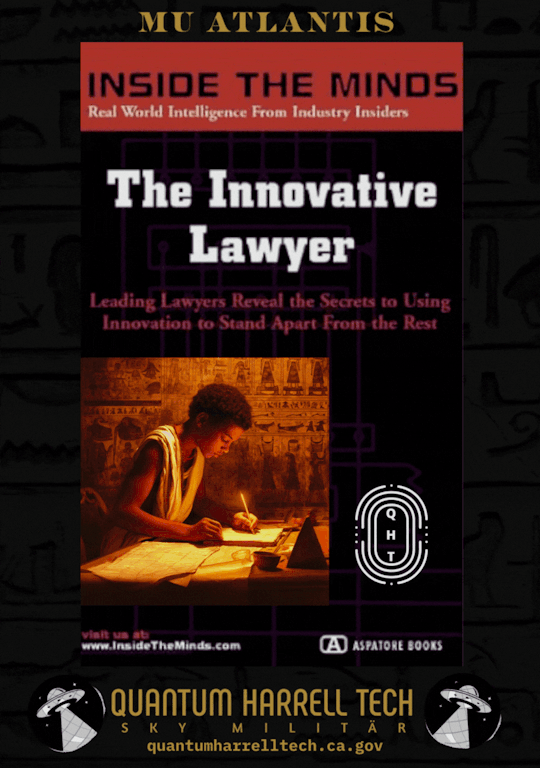
Eye Quantum [EQ] Computing Intel Architect [CIA] Technocrat 1968-michaelharrelljr.com… 1st 9 Ether ALUHUM ANUNNAGI TECHNOCRAT of TIAMAT'S [AT&T'S] Shamballah & aghaarta.com Domain Communication [D.C.] KINGDOM of A THOUSAND YEARS @ quantumharrelltelecom.tech

Eye Quantum [EQ] Computing Intel Architect [CIA] Technocrat 1968-michaelharrelljr.com… 1st 9 Ether ALUHUM ANUNNAGI TECHNOCRAT of TIAMAT'S [AT&T'S] Shamballah & aghaarta.com NUBIANS @ quantumharrelltelecom.tech

SEE?!?!?!

1968-michaelharrelljr.com's 1st ALL-SEEING OMNIPRESENCE Hi:teKEMETICompu_TAH [PTAH] EYE of GOD @ THE TOP

EYE SEE U B4 U C ME… I [MI = MICHAEL] ALL [MA] SEEING EYE ILLUMINATI of ancientqueencalafia.tech's silentwealth-illuminati.com DEPARTMENT OF 1968-michaelharrelljr.com's NEW GOLDEN 9 ETHER [G.E. = ge.com] ALUHUM SKY [GEAS = GAS.com] ANUNNAQI TREASURY.gov @ © 1698-2223 quantumharrelltelecom.tech

© 1698-2223 quantumharrelltech.com - ALL The_Octagon_(Egypt) DotCom [D.C.] defense.gov Department Domain Communication [D.C.] Rights Reserved @ quantumharrelltech.ca.gov
#u.s. michael harrell#jehovah god#michael jehovah#quantumharrelltech#king tut#mu:13#harrelltut#kemet#o michael#quantumharrelltut#9 ether aluhum anunnagi#enqiback#9 ether#department of the treasury#department of defense#department of defense contracts#jehovah michael#new world order#you scared
2 notes
·
View notes
Text
From Novice to Pro: Mastering Microsoft Azure for Unparalleled Career Growth
Introduction
In today’s ever-evolving digital landscape, staying ahead in the realm of information technology is essential for professionals seeking unparalleled career growth. With the increasing reliance on cloud computing, mastering Microsoft Azure, one of the industry’s leading cloud platforms, has become a vital skill set. This comprehensive guide aims to transform novices into experts, providing valuable insights and resources to help individuals navigate the Azure landscape and unlock endless career opportunities.
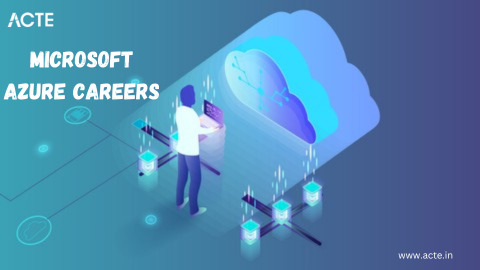
Education: Building a Strong Foundation
Embrace the Fundamentals
Before diving deep into the vast realm of Microsoft Azure, it is crucial to lay a strong foundation by acquiring foundational knowledge. Familiarize yourself with the core concepts of cloud computing, such as Infrastructure as a Service (IaaS), Platform as a Service (PaaS), and Software as a Service (SaaS). Understand the advantages and drawbacks of cloud computing and how it is revolutionizing the way businesses operate.
Explore Azure Fundamentals
Start by earning the Azure Fundamentals certification as you set out on your path to mastering Microsoft Azure. This entry-level certification validates your understanding of Azure services, cloud concepts, Azure pricing models, security, privacy, and compliance. It equips you with a strong base of Azure knowledge and sets you on the path to becoming an Azure expert.
Invest in Continuous Learning
To stay ahead in the rapidly evolving technology landscape, it is crucial to invest in continuous learning. The ACTE institute offers a variety of resources, including Microsoft Azure training courses, documentation, and certifications, to help individuals deepen their Azure expertise. Leverage these resources to expand your knowledge and enhance your problem-solving skills, keeping you at the forefront of industry developments.
Information: Navigating the Azure Landscape
Familiarize Yourself with Azure Services
Microsoft Azure offers a vast array of services designed to meet diverse business needs. Spend time exploring and gaining familiarity with the core Azure services, including Virtual Machines, Azure App Service, Azure Functions, Azure Storage, and Azure SQL Database. Understand their use cases, benefits, and how they integrate within the broader Azure ecosystem. This knowledge will enable you to confidently architect, deploy, and manage Azure solutions.
Master Azure Networking
Networking forms the backbone of any cloud infrastructure. Azure provides an extensive suite of networking services and capabilities that enable seamless and secure communication between various components of an Azure deployment. Dive deep into understanding concepts such as virtual networks, subnets, Azure DNS, Azure Load Balancer, and Azure Traffic Manager. By mastering Azure networking, you will gain the expertise needed to design and deploy highly available and resilient architectures.
Harness the Power of Azure Security
As organizations increasingly adopt cloud technologies, ensuring robust security measures within the Azure environment is paramount. Gain an in-depth understanding of Azure’s security features and controls, including Azure Active Directory, Azure Security Center, Azure Key Vault, and Azure DDoS Protection. By becoming well-versed in Azure security, you can protect sensitive data, detect and respond to threats, and confidently address compliance requirements.
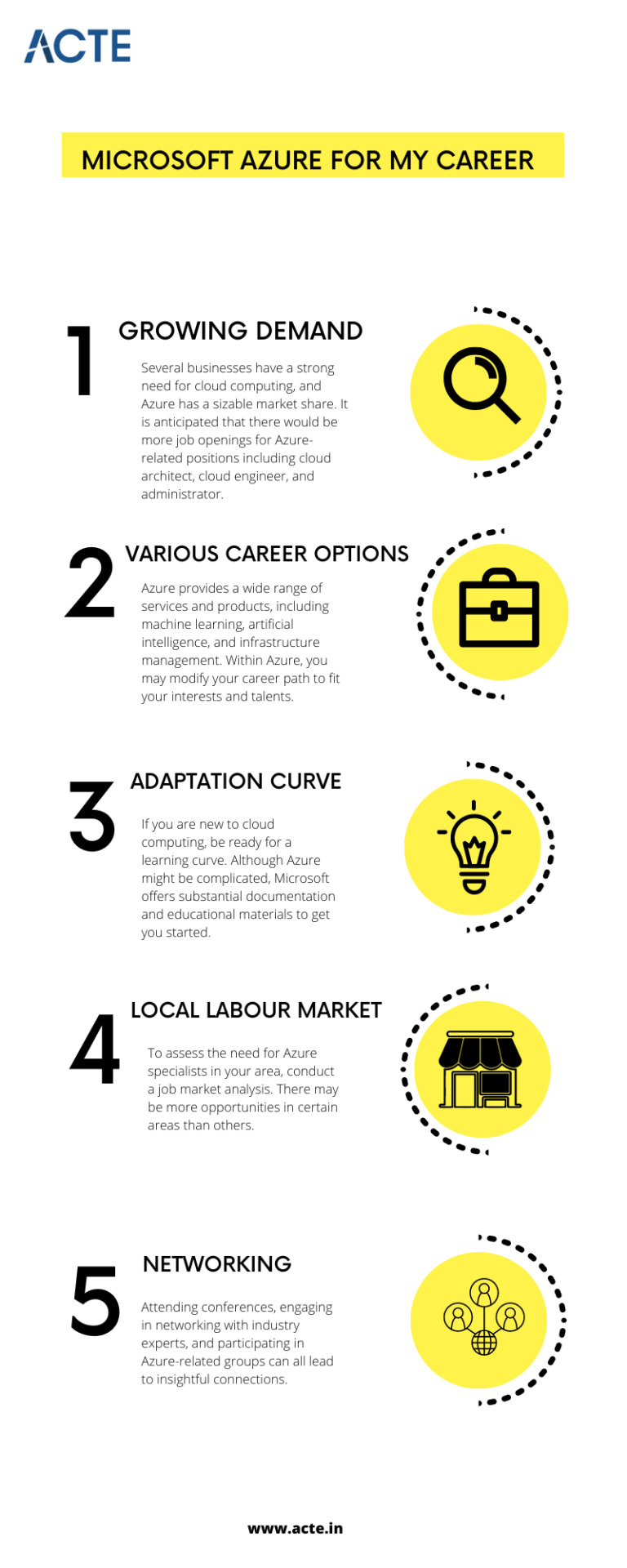
Technology: Advancing Azure Proficiency
Automate with Azure Automation
Automation is the key to maximizing efficiency and productivity within Azure deployments. Acquaint yourself with Azure Automation, a service that allows you to automate repetitive, manual tasks and standardize processes. Learn how to create and manage runbooks, design and implement automation workflows, and leverage the power of Desired State Configuration (DSC). By becoming proficient in Azure Automation, you can streamline operations and unleash the true potential of Azure.
Embrace DevOps with Azure DevOps
In the world of modern software development, DevOps practices play a vital role in driving agility, collaboration, and continuous delivery. Azure DevOps provides an end-to-end DevOps platform, empowering teams to plan, develop, test, and deploy applications seamlessly. Expand your Azure proficiency by diving into Azure Boards, Azure Repos, Azure Pipelines, and Azure Test Plans. Mastering Azure DevOps will enable you to deliver value faster, ensuring your career growth remains unmatched.
Explore Advanced Azure Services
Once you have developed a strong foundation in Azure, immerse yourself in the realm of advanced Azure services. Gain expertise in areas such as Azure Kubernetes Service (AKS), Azure Functions, Azure Logic Apps, Azure Cognitive Services, and Azure Machine Learning. These cutting-edge services allow you to build intelligent applications, leverage artificial intelligence capabilities, and unlock new possibilities in various domains. By continuously exploring and expanding your Azure skills, you position yourself as a sought-after professional in the technology landscape.
Mastering Microsoft Azure offers an unparalleled path to career growth in the information technology industry. By embracing education, navigating the vast realm of Azure services, and advancing your Azure proficiency through technology-driven practices, you equip yourself with the tools and knowledge needed to propel your career to new heights. The journey from a novice to an Azure pro may seem daunting, but with determination and a commitment to continuous learning, the rewards are plentiful. So, seize the opportunity, immerse yourself in the world of Microsoft Azure, and unlock a future filled with endless possibilities.
5 notes
·
View notes
Text
The Role of Software Engineering in Enterprise Architecture - Jegarakshagan Gokul
Jegarakshagan Gokul says, Enterprise architecture (EA) provides organizations with a strategic blueprint for aligning their business processes and IT infrastructure to achieve their goals. It encompasses various domains, including business architecture, data architecture, application architecture, and technology architecture. In this intricate landscape, software engineering plays a pivotal role in implementing and supporting enterprise architecture initiatives. This article explores the critical role of software engineering in enterprise architecture and highlights its impact on organizational success.

Enabling Alignment and Integration: Software engineering acts as a bridge between enterprise architecture and the actual implementation of systems. It ensures that the software solutions developed align with the architectural principles and strategic goals defined by EA. By incorporating software engineering practices early in the EA process, organizations can achieve seamless alignment and integration across different architectural domains.
Driving Design and Development: Software engineering brings expertise in designing and developing robust, scalable, and maintainable software systems. It plays a key role in translating the architectural blueprints into concrete software solutions. Software engineers leverage their technical skills, knowledge of industry best practices, and adherence to coding standards to build software components that meet the requirements defined by enterprise architects.
Ensuring Quality and Compliance: Software engineering contributes to ensuring the quality and compliance of software systems within the enterprise architecture framework. According to Jegarakshagan Gokul, through rigorous testing, code reviews, and adherence to coding standards, software engineers help identify and rectify issues early in the development lifecycle. This ensures that the software solutions adhere to the architectural guidelines, security protocols, and regulatory compliance requirements.
Supporting Change Management: Enterprise architecture is not static; it evolves over time to meet changing business needs and technological advancements. Software engineering plays a critical role in supporting change management within the EA framework. By following agile methodologies, software engineers can quickly adapt and respond to changing requirements, implement architectural changes, and deliver incremental updates to the software systems.
Enhancing Collaboration: Jegarakshagan Gokul says, collaboration is vital for successful enterprise architecture initiatives. Software engineers work closely with enterprise architects, business stakeholders, and IT teams to understand requirements, address technical challenges, and ensure effective communication throughout the development process. By fostering collaboration, software engineering strengthens the integration of enterprise architecture with business processes and IT systems.
Leveraging Emerging Technologies: Software engineering keeps pace with emerging technologies and trends, allowing organizations to leverage innovations within the enterprise architecture context. Whether it's adopting cloud computing, implementing microservices architecture, or exploring artificial intelligence and machine learning, software engineers play a pivotal role in identifying and integrating these technologies into the enterprise architecture landscape.
Continuous Improvement and Optimization: Enterprise architecture is an ongoing process, and software engineering contributes to continuous improvement and optimization. Software engineers monitor system performance, identify bottlenecks, and implement optimizations to enhance the efficiency and effectiveness of the software solutions within the enterprise architecture. By leveraging feedback and data-driven insights, they drive iterative improvements to align software systems with evolving business needs.
Conclusion: According to Jegarakshagan Gokul, software engineering is not just a technical implementation aspect within enterprise architecture; it plays a vital role in driving successful EA initiatives. By aligning software engineering practices with enterprise architecture principles, organizations can realize the full potential of their architectural investments. The collaboration between software engineers and enterprise architects ensures the design, development, and maintenance of software systems that seamlessly integrate with the overall enterprise architecture, ultimately leading to improved operational efficiency, business agility, and competitive advantage.
2 notes
·
View notes
Text
Cloud Computing for Beginners
Cloud computing is a technology that enables users to access computing resources such as applications, storage, servers, and networks over the internet. It is a great way for beginners to get started with computing without having to purchase expensive hardware or software. Cloud computing can be used for a variety of tasks from hosting websites and storing data to running complex applications. With cloud computing, users can scale up or down depending on their needs and pay only for the services they use. It is also more secure than traditional methods of hosting data and applications as it has built-in security measures in place. Cloud computing is an ideal solution for businesses of all sizes looking to reduce costs while increasing efficiency and productivity.
Cloud Essentials 101 is a course designed to help beginners understand the fundamentals of cloud computing. It covers the basics of cloud computing, including its architecture, different types of cloud services, and how to use them effectively. Additionally, this course provides an in-depth look at the security aspects of cloud computing as well as best practices for using it. By the end of this course, students will be able to identify and explain different types of clouds and their respective advantages and disadvantages. They will also be able to make informed decisions about which type of cloud service is best for their needs.
#cloud computing#cloud essentials#data storage#cloud migration#cloud security#cloud networking#cloud architecture#IAAS#PAAS#SAAS#cloud solutions
0 notes
Text
Amazon Web Service & Adobe Experience Manager:- A Journey together (Part-1)
In the world of digital marketing today, providing a quick, secure, and seamless experience is crucial. A quicker time to market might be a differentiation, and it is crucial to reach a larger audience across all devices. Businesses are relying on cloud-based solutions to increase corporate agility, seize new opportunities, and cut costs.
Managing your marketing content and assets is simple with AEM. There are many advantages to using AWS to run AEM, including improved business agility, better flexibility, and lower expenses.
AEM & AWS a Gift for you:-
We knows about AEM as market leader in the Digital marketing but AWS is having answer for almost all the Architectural concerns like global capacity, security, reliability, fault tolerance, programmability, and usability.
So now AEM become more powerful with the power of AWS and gaining more popularity than the on-premises infrastructure.
Limitless Capacity
This combination gives full freedom to scale all AEM environments speedily in cost effective manner, addition is now more easy,
In peak traffic volume where requests are very huge or unknown then AEM instance need more power or scaling . Here friend AWS come in to picture for rescue as the on-demand feature allows to scale all workloads. In holiday season, sporting events and sale events like thanks giving etc. AWS is holding hand of AEM and say
"Hey don't worry I am here for you, i will not left you alone in these peak scenario"
When AEM require upgrade but worried about other things like downtime backup etc then also AWS as friend come and support greatly with its cloud capability. It streamlines upgrades and deployments of AEM.
Now it become easy task with AWS. Parallel environment is cake walk now, so migration and testing is much easier without thinking of the infrastructure difficulties.
Performance testing from the QA is much easier without disturbing production. It can be done in AEM production-like environment. Performing the actual production upgrade itself can then be as simple as the change of a domain name system (DNS) entry.
Sky is no limit for AEM with AWS features and Capabilities :
As a market leader AEM is used by customers as the foundation of their digital marketing platform. AWS and AEM can provide a lot of third part integration opportunity such as blogs, and providing additional tools for supporting mobile delivery, analytics, and big data management.
A new feature can be generated with AWS & AEM combination.Many services like Amazon Simple Notification Service (Amazon SNS), Amazon Simple Queue Service (Amazon SQS), and AWS Lambda, AEM functionality easily integrated with third-party APIs in a decoupled manner. AWS can provide a clean, manageable, and auditable approach to decoupled integration with back-end systems such as CRM and e-commerce systems.
24*7 Global Availability of AEM with Buddy AWS
A more Agile and Innovative requirement can fulfill by cloud transition. How innovation and how much Agile, in previous on-premise environment for any innovation need new infrastructure and more capital expenditure (Capex). Here again the golden combination of AWS and AEM will make things easier and agile. The AWS Cloud model gives you the agility to quickly spin up new instances on AWS, and the ability to try out new services
without investing in large and upfront costs. One of the feature of AWS pay-for-what-you-use pricing model is become savior in these activities.
AWS Global Infrastructure available across 24
geographic regions around the globe, so enabling customers to deploy on a global footprint quickly and easily.
Major Security concerns handled with High-Compliance
Security is the major concern about any AEM website. AWS gifts these control and confidence for secure environment. AWS ensure that you will gain the control and confidence with safety and flexibility in secure cloud computing environment .
AWS, provides way to improve ability to meet core security and compliance requirements with a comprehensive set of services and features. Compliance certifications and attestations are assessed by a third-party, independent auditor.
Running AEM on AWS provides customers with the benefits of leveraging the compliance and security capabilities of AWS, along with the ability to monitor and audit access to AEM using AWS Security, Identity and Compliance services.
Continue in part-2.......
2 notes
·
View notes
Text
6G: A Cloud-Centric Wireless Future

As the stage where 6G communication is regarded as the futuristic technology that lay out possibilities, more use cases and new generation of cellular communication standards spring up. Zhang Ping, an Academician of Chinese Academy of Engineering, stated that the future 6G would be technology combined with communication, computing, perceiving, AI, and security. Wireless cloud solutions are the most suitable for 6G development.
The Power of Cloud
Cloud-managed wireless market shows the future growth potential in the latest released study. 6G is a cloud-centric wireless future. Cloud is a new economics and a new supply chain.
The open cloud wireless network can better meet the needs of 6G multi-dimensional networking. Additionally, the cloud system gets rid of the traditional software and hardware form to redefine “wireless network”. It opens up more options for operators and integrators to deploy new EPC and 5GC network.
However, there is always the other side of the coin.
Challenges and Possibilities
Up until now, multiple challenges still exist in 6G wireless. It’s concentrated on the MCPTT and security system solutions. While there is certainly an appeal to 6G Implementations, especially for enterprises, colleges and laboratories, we still need to figure out how to solve related challenges: how to ensure the quality of services, how to better integrate with all 6G capabilities, how to design a reasonable network architecture, alike problems.
Moving to open cloud wireless is going to require 6G. The world where the network becomes multimode through a cloud player, is the world where 6G technology features at industrial and ecological clusters. Cloud wireless network becomes a popular trend, which will definitely usher a new supply chain.
IPLOOK's Step into “Cloud”
IPLOOK core network has successfully deployed on Alibaba Cloud, Tencent Cloud, AWS Cloud alike cloud platforms, providing carrier-grade end-to-end mobile network solutions for operators and enterprises.
The network deployment on cloud enables customers to rapidly obtain core network with lower CAPEX, and also simplifies the management, achieving rapid start-up of the core network business.
Contact us for more info!
5 notes
·
View notes
Text
Why ITSIPL is Best Forcepoint reseller
Helping business discover & buy the best Software to grow their business.
Established in 1996, I.T. Solutions India Pvt. Ltd. (ITSIPL) is one of the trusted & pioneers in providing I.T infrastructure and solutions on various platforms.
ITSIPL Technologies is a Delhi based System Integrator and a one-stop destination for all your business needs right from a desktop to software to marketing. Our main focus is to fulfill software, hardware & marketing needs of clients. ITSIPL works closely with their clients to ensure that they are getting maximum from their investments.
ITSIPL works on a client’s requirements & our portfolio consist of everything your business requires to grow. ITSIPL offers a technology vision as well as segment-specific architectures for building a network infrastructure that will meet your needs today and tomorrow. ITSIPL provides architecture road maps to help you build a more resilient, adaptive and intelligent network infrastructure.

➛ What is Forcepoint Services
Forcepoint is the leading user and data security cyber security company, entrusted to safeguard organizations while driving digital transformation and growth. Our solutions adapt in real-time to how people interact with data, providing secure access while enabling employees to create value.
➛ WHAT TYPE OF SOFTWARE IS FORCEPOINT
Computer security software
Forcepoint, an American multinational corporation software company headquartered in Austin, Texas, that develops computer security software and data protection, cloud access security broker, firewall and cross-domain solutions.

➛ WHAT IS FORCEPOINT IN NETWORK
Forcepoint combines true enterprise-class SD-WAN, advanced intrusion prevention, and seamless integration with cloud-based SASE security to keep your people and data safe—all at global scale. Detect and discover advanced threats.
➟ Deliver Forcepoint Services
It’s our goal for every customer to be delighted with the solutions they have chosen to protect their business and for the value of these solutions to be fully realized within their operational environment. For this reason, our sales coverage and expansion strategy is founded on the value of the consultative role of partners who integrate services, knowledge and experiences into customers’ projects. Forcepoint invites partners who sell our products and have a strong services capability to participate in our services ecosystem and help drive our customers’ success as accredited services

➢ WHY TO CHOOSE US
Browse options below. Based on reviewer data We are Best Forcepoint Reseller, you can see how Forcepoint Secure Web Gateway stacks up to the competition, check reviews from current & previous users in industries like Media Production, Banking, and Information Technology and Services, and find the best product for your business.
We follow a friendly & professional approach and a passion for delivering the best possible value for money for each customer and we really do go that extra mile whenever it is required.
2 notes
·
View notes